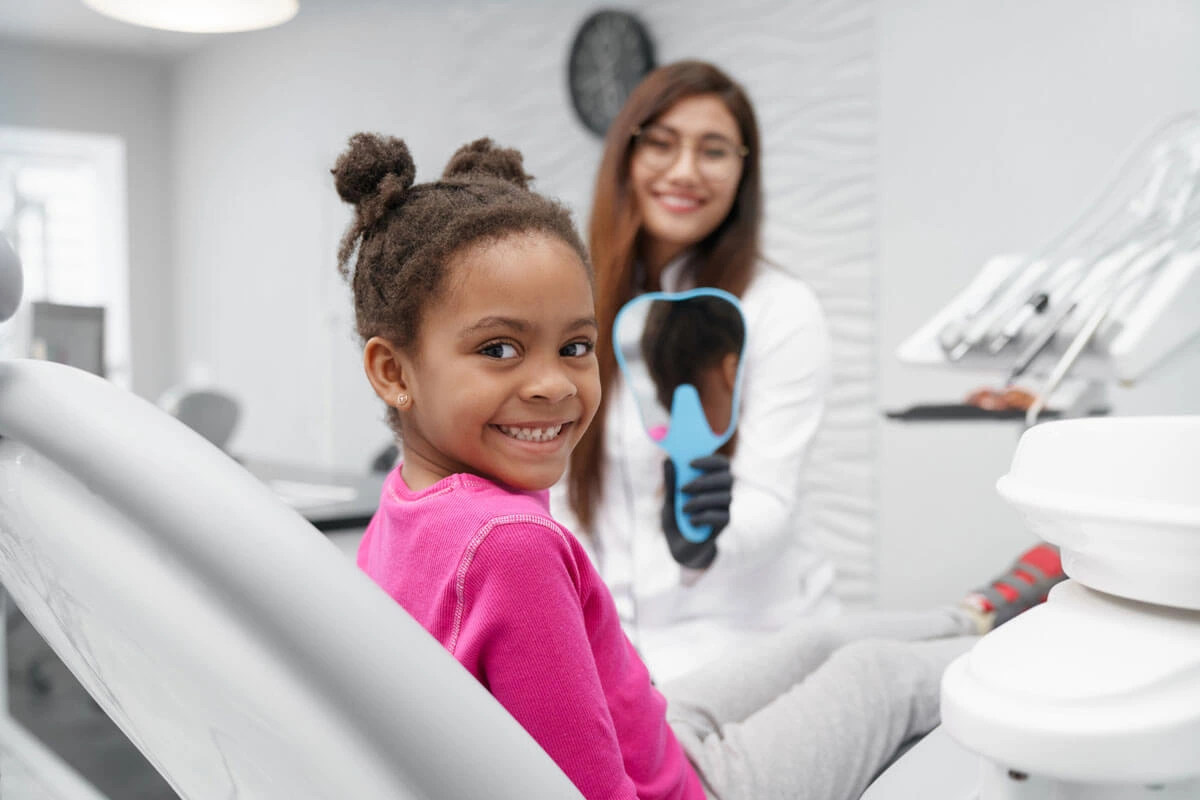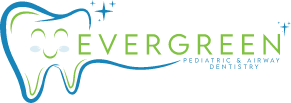Sleep Dentistry for Kids Near Me: Making Dental Visits Stress-Free
A trip to the dentist can be a source of anxiety for many children. The unfamiliar sounds, strange tools, and the idea of someone working inside their mouth can be overwhelming. For parents, watching their child experience this distress can be just as difficult. If you’ve been searching for a way to make dental visits less stressful, you may have come across the term “sleep dentistry.”
This guide will explain what sleep dentistry for kids is and how it can transform your child’s dental experience from a source of fear into a calm and manageable event. We’ll cover the different types of sedation available, what to expect before, during, and after a procedure, and how to know if it’s the right choice for your family. By the end, you’ll have a clear understanding of how practices like Evergreen Pediatric Dentistry are helping kids get the dental care they need without the anxiety.
What is Sleep Dentistry?
Sleep dentistry, also known as sedation dentistry, uses medication to help patients relax during dental procedures. The primary goal is to create a safe and comfortable environment, especially for patients who experience significant anxiety or fear. For children, this can be particularly beneficial.
The term “sleep dentistry” can sometimes be misleading. While some forms of sedation do cause the child to fall asleep, many options simply induce a state of deep relaxation where the child remains conscious but calm. The level of sedation is carefully chosen based on the child’s age, anxiety level, medical history, and the complexity of the dental treatment required.

Sleep Dentistry for Kids
Benefits of Sleep Dentistry for Children
Choosing sleep dentistry offers several advantages for young patients:
- Reduces Fear and Anxiety: It helps manage dental phobia, making the experience less traumatic.
- Increases Cooperation: A relaxed child is more likely to sit still, allowing the dentist to work more efficiently and safely.
- Pain Management: Sedation can help control pain, ensuring a comfortable procedure.
- Completes More Work in One Visit: For extensive dental work, sedation allows the dentist to perform multiple treatments in a single appointment, reducing the number of visits.
- Creates Positive Dental Experiences: A stress-free visit can help prevent the development of long-term dental phobias.
Understanding Pediatric Dental Anxiety
It’s natural for children to feel nervous about new experiences, and dental visits are no exception. Research shows that dental anxiety is common, affecting up to 20% of school-aged children. Understanding the root causes can help parents and dentists address these fears effectively.
Common causes of dental anxiety in children include:
- Fear of the Unknown: Unfamiliar sights, sounds, and sensations can be intimidating.
- Fear of Pain: Many children associate dental work with pain, either from their own past experiences or from stories they’ve heard.
- Negative Past Experiences: A single difficult dental visit can create lasting anxiety.
- Parental Anxiety: Children are perceptive and can pick up on a parent’s own dental fears.
- Feeling of Helplessness: Lying back in a dental chair can make a child feel a lack of control.
By recognizing these triggers, we can better prepare children and use techniques like sleep dentistry to ensure they feel secure.
Types of Sleep Dentistry at Evergreen Pediatric Dentistry
At Evergreen Pediatric Dentistry, we offer a range of sedation options tailored to meet the unique needs of each child. Our experienced team will recommend the most appropriate method after a thorough evaluation.
Nitrous Oxide (Laughing Gas)
Nitrous oxide is a mild, safe sedative that is inhaled through a small mask placed over the child’s nose. It is one of the most common forms of sedation in pediatric dentistry.
- How It Works: The gas helps the child feel relaxed and happy, often causing giggles (hence the name “laughing gas”). The child remains awake and can communicate with the dental team throughout the procedure.
- Benefits: The effects wear off quickly once the mask is removed, allowing your child to return to their normal activities almost immediately. It’s a great option for mild anxiety and shorter procedures.
- What to Expect: Your child will breathe the gas for a few minutes before the treatment begins. They will feel calm and comfortable during the procedure. Afterward, they will breathe pure oxygen to clear any remaining nitrous oxide from their system.
Oral Sedation
Oral sedation involves giving your child a prescribed dose of sedative medication before the appointment. This option is suitable for children with moderate anxiety or those undergoing longer treatments.
- How It Works: The medication, usually in liquid or pill form, makes the child feel drowsy and very relaxed. They will still be conscious and able to respond, but they may not remember much about the procedure afterward.
- Benefits: It provides a deeper level of relaxation than nitrous oxide and is administered without needles. The amnesic effect can be beneficial for preventing negative memories.
- What to Expect: You will be given instructions on when to administer the medication, typically an hour before the appointment. Your child will feel sleepy and will need to be monitored closely after the procedure.
IV Sedation
Intravenous (IV) sedation is administered directly into the bloodstream through a small needle. It offers a deeper level of sedation that can be adjusted in real-time by a trained professional.
- How It Works: A certified anesthesiologist administers the medication, allowing the child to enter a “twilight sleep.” They are not fully unconscious but are in a deep state of relaxation and unlikely to remember the procedure.
- Benefits: IV sedation is highly effective for children with severe anxiety, special healthcare needs, or those requiring complex and lengthy dental work. The level of sedation can be precisely controlled throughout the procedure.
- What to Expect: A specialist will administer and monitor the sedation. Your child’s vital signs will be continuously tracked to ensure their safety. Recovery takes longer than with milder forms of sedation.
General Anesthesia
General anesthesia is the deepest level of sedation, rendering the child completely unconscious. This is typically performed in a hospital or a specialized surgical center by an anesthesiologist.
- How It Works: The child is put to sleep for the duration of the dental procedure and will have no memory of it.
- Benefits: This is the best option for children who cannot cooperate due to age, severe anxiety, or medical conditions. It allows the dental team to complete all necessary treatments safely and efficiently.
- What to Expect: The procedure is performed in a hospital setting with a full medical team. Your child will be closely monitored before, during, and after the treatment.

Sleep Dental Treatment
Preparing Your Child for Sleep Dentistry
Proper preparation is key to a successful and safe sleep dentistry experience. Our team at Evergreen Pediatric Dentistry will provide you with detailed pre-appointment guidelines.
- Fasting Instructions: For most forms of sedation (excluding nitrous oxide), your child will need to avoid food and drink for a specific period before the appointment. This is crucial for their safety.
- Comfortable Clothing: Dress your child in loose, comfortable clothing.
- Communicate with Your Child: Explain the visit in simple, positive terms. Avoid using scary words like “shot” or “pain.” Let them know they will be sleepy and relaxed.
- What to Bring: Bring a favorite blanket or stuffed animal for comfort. You will also need to have another adult present to help you drive home and care for your child after the appointment.
Post-Procedure Care and Recovery
After the procedure, your child will need time to recover as the sedation wears off.
- Monitoring: Stay with your child and monitor them closely for the rest of the day. They may feel sleepy, dizzy, or nauseous.
- Diet: Start with clear liquids and gradually introduce soft foods as they feel up to it. Avoid hot foods and drinks until the local anesthetic has worn off.
- Activity: Encourage rest and quiet activities for the remainder of the day.
- Side Effects: Common side effects include grogginess, nausea, and minor discomfort. We will provide specific instructions on how to manage these symptoms and when to contact our office if you have concerns.
Why Choose Evergreen Pediatric Dentistry?
When it comes to your child’s health, you want a team you can trust. At Evergreen Pediatric Dentistry, we combine expertise with compassion to provide the highest standard of care.
- Experienced and Caring Team: Our dentists are specialists in pediatric care and are trained to manage the unique needs of children. Our entire team is dedicated to creating a warm and welcoming environment.
- State-of-the-Art Facilities: We use the latest technology and safety equipment to ensure your child receives the best possible care. Our monitoring systems allow us to track your child’s vital signs continuously during sedation.
Your Questions About Sleep Dentistry Answered
It’s normal for parents to have questions and concerns about sedation. Here, we address some common myths and questions.
Is sleep dentistry safe for my child?
Yes. When administered by a trained and experienced professional, sleep dentistry is very safe. At Evergreen Pediatric Dentistry, we adhere to strict safety protocols and use advanced monitoring equipment to ensure your child’s well-being throughout the entire process.
Will my child feel any pain?
Sleep dentistry is designed to manage both anxiety and pain. In addition to the sedative, a local anesthetic is often used to numb the treatment area, ensuring your child remains comfortable.
How do I know which type of sedation is right for my child?
Our dental team will conduct a thorough assessment of your child’s medical history, anxiety level, and treatment needs. Based on this evaluation, we will recommend the safest and most effective sedation option for them.

Sleep Dentistry
Your Path to Stress-Free Dental Care
Sleep dentistry offers a powerful solution for making essential dental care accessible and stress-free for children. By managing fear and anxiety, we can not only perform necessary treatments but also help build a foundation of positive dental experiences that will last a lifetime.
If your child struggles with dental visits, you don’t have to navigate it alone. Contact Evergreen Pediatric Dentistry today to schedule a consultation. Our compassionate team is here to answer your questions and help you find the best path forward for your child’s oral health.
Evergreen Pediatric & Airway Dentistry
Dr. Susan Kim
12910 Totem Lake Blvd NE #103
Kirkland, WA 98034
(425) 814-3196
Get Directions on Google Maps
evergreenkidsdentist.com


